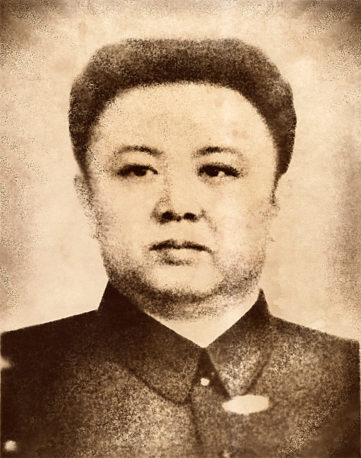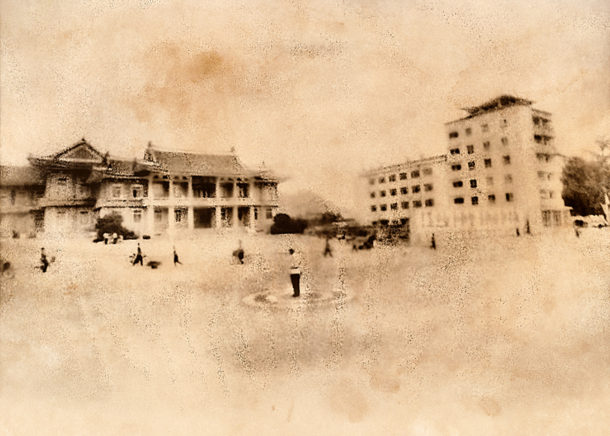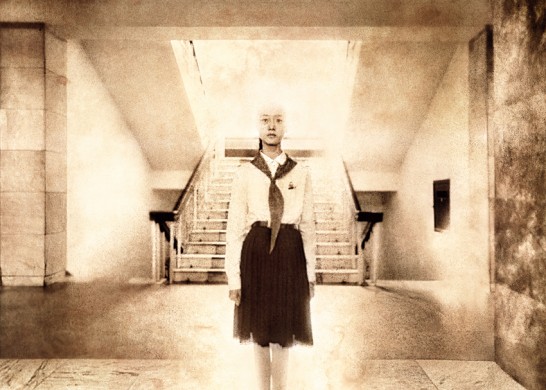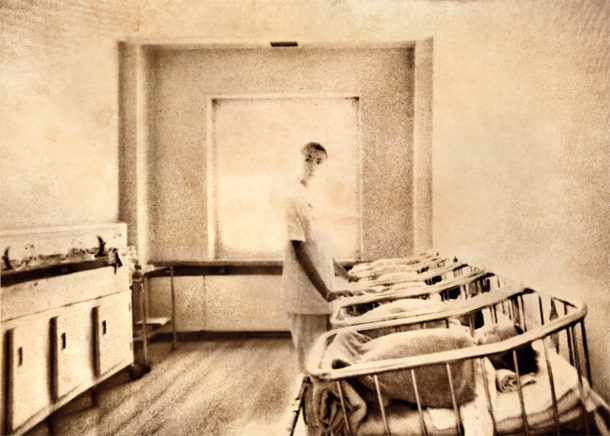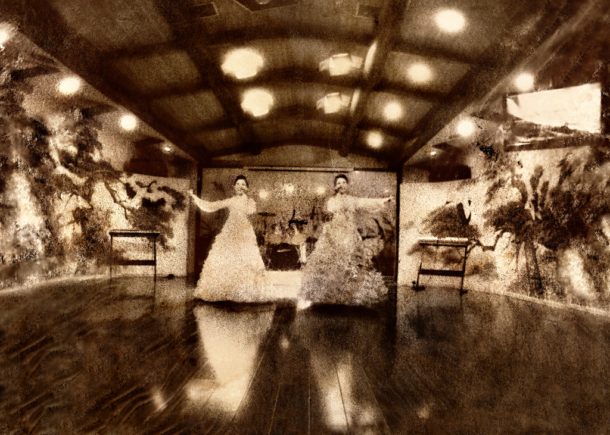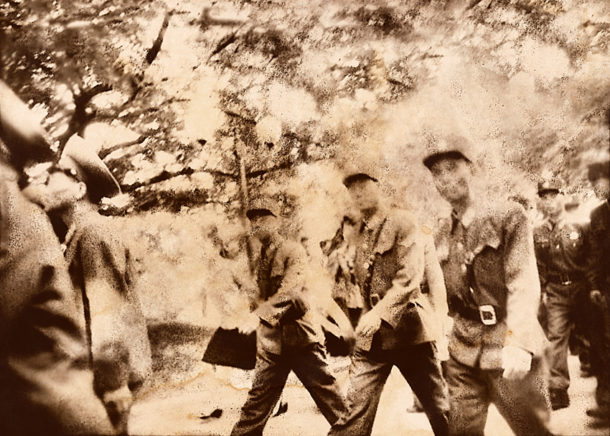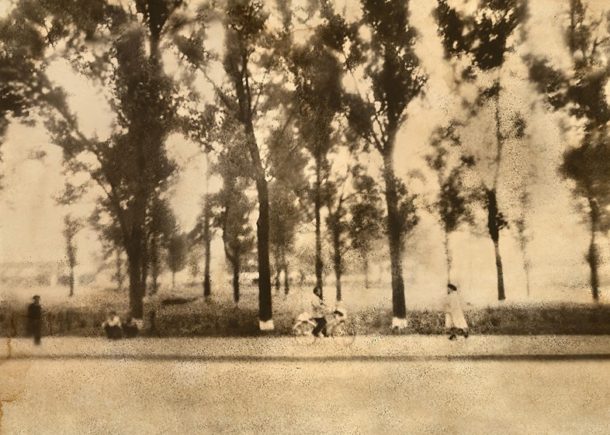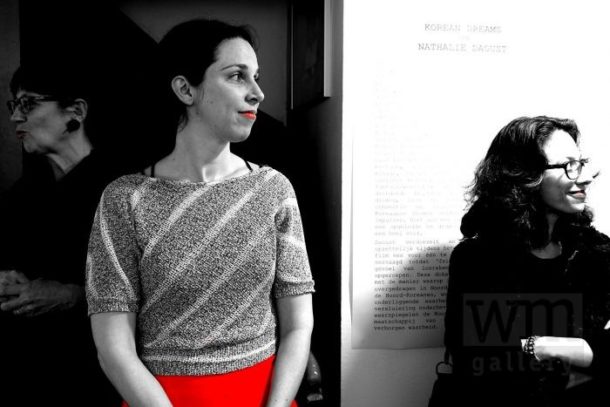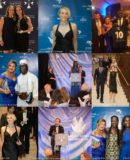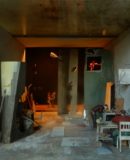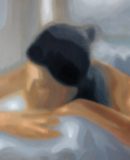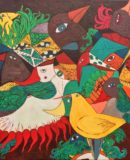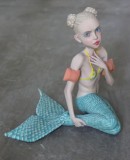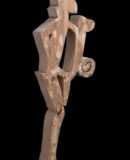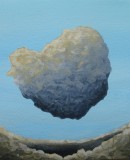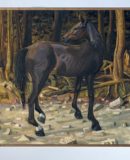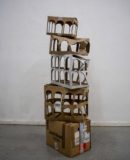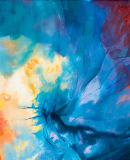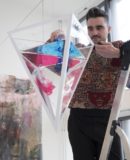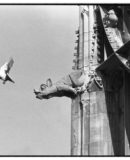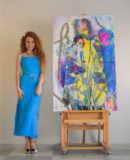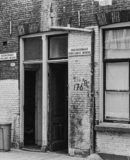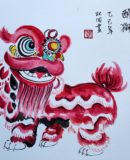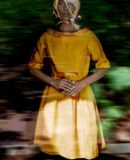World Fine Art Professionals and their Key-Pieces, 152 – Nathalie Daoust
World Fine Art Professionals and their Key-Pieces, 152 – Nathalie Daoust
Recently I was at the opening of ‘Korean Dreams’, an exhibition of photos by Nathalie Daoust from Montreal. In these photos she inquires the enigmatic world of North Korea. The brown-tinged photos exude an ominous atmosphere, it looks like a country that exists isolated from the rest of the world.
She got the idea while she was working on a photo documentary on North Korean women living in hiding in China and working in the sex industry. Nathalie Daoust: “I thought that it would be important for me to travel to North Korea to understand better why these women would rather live in such conditions in China than remain in their own country with their friends and family.”
From waist height
As it was difficult to enter North Korea as a journalist or a photographer, she decided to enter the country as a tourist. “The people who helped me get there said it would be risky for me, since there had been some articles published online about my project in China with the North Korean women. It took around six months to have all the information removed from the Internet, and then I was able to travel without any problems. Once I was in North Korea I was allowed to take photographs in the tourist area. When I was in places where photography was forbidden, I was able to take photos with a hidden cable release. That is why many of my photos are taken from waist height.”
Having experienced North Korea in the flesh, she felt compelled to create a separate series of images on the real conditions that exist inside the country in order to raise awareness around the plight that millions of people live in. It is the primary concern of this exhibition, she says. The exhibition is travelling in several countries.
Three-generation policy
“Until I went there, I didn’t understand why, after so many years of repression, the people of North Korea do not just stand up and fight for their freedom. However, after being there and doing extensive research on the country, I now understand and have great sympathy for the situation in which the North Korean people find themselves.”
Executions and false imprisonment are commonplace. “You can spend up to ten years in prison for just wearing jeans, which are forbidden by the state. As an extra deterrent, there is also a three-generation policy. Even if you are willing to risk your life for the greater good of freeing your country, if you get caught, your children, parents and grandparents also receive the same punishment. This makes change almost impossible.”
Escaping from reality
Escaping from everyday reality and everyday life is a recurring theme in Nathalie’s work. “I feel that everyone has their own way to escape from their everyday reality and their everyday life. I am very interested in understanding the what, where and why of this.” In the past she focused on individuals escaping from their own reality.
One example is a project she did on a man who dressed like Mao Zedong. “He was otherwise a very normal man that no one would notice in the crowded streets of China. However, when he dressed up as Mao Zedong, he suddenly became important and people talked to him. This made him feel more powerful enabling him to escape from his impoverished life even if just for a few hours. He told me that he did this simply because he enjoyed the way that it felt (it was not a job). This momentary feeling of escapement was enough for him.“
In another project, she photographed an S&M love hotel in Japan where clients escape from their everyday lives. “Here, I was fascinated both by where people go for such escape (the Alpha-In) and by the women they pay to help them achieve this escapement.”
The darkroom
Nathalie Daoust graduated from photography school in 1997, 20 years ago. Right after she moved to New York to start her first photo series New York Hotel Story. “It involved photographing every room of an art hotel and the artist who decorated it.”
What she loves about photography is that it shows ‘reality’. “However, a raw negative does not always express the feeling, interaction, atmosphere, and connection felt between the subject and location. I often experience an energy and feeling while taking photos that the camera simply cannot capture. This is where in the darkroom comes. I can manipulate the photos to represent how I felt in that exact moment.”
For example in North Korea she felt like everyone she met was ‘not there’, disconnected and beyond reach. “I never felt that I was able to form a clear picture of North Korea and that most of the information that I was told was obscured and lost at every turn. That is why I developed a technique in the darkroom to instill the images with this same feeling. This involved exposing and peeling the prints over and over again to mimic the way that information is lost through the myriad layers of oppression and censorship that exist in North Korea. In effect, you need to peel many layers before reaching the truth. This technique also captures the strong sense of detachment from reality that I felt when I was there and represent more the feeling I had of missing information and truth concealed.”
Mimicking
Nathalie concludes: “Truth in North Korea is largely fictional. Hence, I wanted to convey what is really happening in a country that suppresses information and conceals reality. Thus it mimics the regime’s carefully regulated transfer of information, which stifles the truth until the underlying facts are all but a blur. Consequently the photographs are as manipulated as the North Korean people whom they portray.”
Images
1) Kim Jong-Il, Kim Jong-Il was the Supreme Leader of the Democratic People’s Republic of Korea between 1994 and 2011. Affectionately referred to as the “Dear Leader”, Kim Jong-Il presided over a highly repressive regime that controlled virtually every aspect of political, social and economic life. Note: The North Korean government website once stated that Kim Jong-Il was the world greatest golfer and never needed to urinate or defecate.
2) Traffic Lights, Virtually none of the traffic lights in North Korea operate due to constant electricity cuts and poor maintenance. Instead, policemen and women operate like machines, standing at the centre of many intersections, to control the few cars on the road.
3) Schooling, Education is universal and state-funded. According to the CIA North Korea has a 100% literacy rate and students have to complete a three-year, 81-hour course on Kim Jong-un. Note: In the 1990s all teachers were required to pass an accordion test before being able to receive their teaching certificate.
4) Healthcare, In 1947, free healthcare was introduced for all citizens in North Korea, but the system collapsed in the late eighties. Many hospitals operate without electricity or heat and all patients have to buy their own medicines. While visiting a hospital we were told that no handicap children were born in North Korea since the 1950’s due to their strong genes. Note: A North Korean doctor who defected, Ri Kwang-chol, has claimed that babies born with physical defects are rapidly put to death and buried.
5) Transport, Transport in North Korea is constrained by economic problems and government restrictions. Public transport predominates, and most of it is electrified. Bicycles are increasingly common but remain a luxury item especially for electric models. Although cars are largely absent from the country’s highways, normal citizens may only travel in the slowest lane at 25 mph and are not allowed to overtake.
6) Bicycles, The late Kim Jong Il reportedly felt that the sight of a woman on a bike was potentially damaging to public morality. It was the last straw when, in the mid nineties, the daughter of a top general was killed on a bike. From this point forward, the law has periodically banned women from riding bicycles and they are generally restricted from holding driving licenses.
7) Pleasure Brigade, The Kippumjo or Gippeumjo (translated variously as Pleasure Squad, Pleasure Brigade or Joy Division) is an alleged collection of groups of approximately 2,000 women and girls that is maintained by the head of state of North Korea for the purpose of providing pleasure, mostly of a sexual nature, and entertainment for high-ranking Workers’ Party of Korea officials and their families, as well as occasionally distinguished guests.
8) Three Generations of Punishment, North Korea law specifies ‘three generations of punishment’. If you commit a crime, your children and grandchildren will also receive the full brunt of punishment, which often involves a lifetime in prison. Children born in prison are raised as prisoners because their “blood is guilty”. Instituted in 1950, this law was supposed to eliminate the blood lineage of counter revolutionary North Koreans after the war.
9) Songbung, In a three-caste system called Songbung, the designation “friendly”, “neutral”, or “enemy” determines whether someone will gain access to education, employment opportunities and membership of the ruling party. The system is based on a person’s family history. Kim Jong Un’s mother was half Japanese, the lowest status for a North Korean. After Kim Jong-il’s death, her personal information, including her name, became state secrets.
10) Nathalie Daoust, photo Dixie Solleveld.
Disclaimer: The views, opinions and positions expressed within this guest article are those of the author Walter van Teeffelen alone and do not represent those of the Marbella Marbella website. The accuracy, completeness and validity of any statements made within this article are not guaranteed. We accept no liability for any errors, omissions or representations. The copyright of this content belongs to Walter van Teeffelen and any liability with regards to infringement of intellectual property rights remains with the author.

